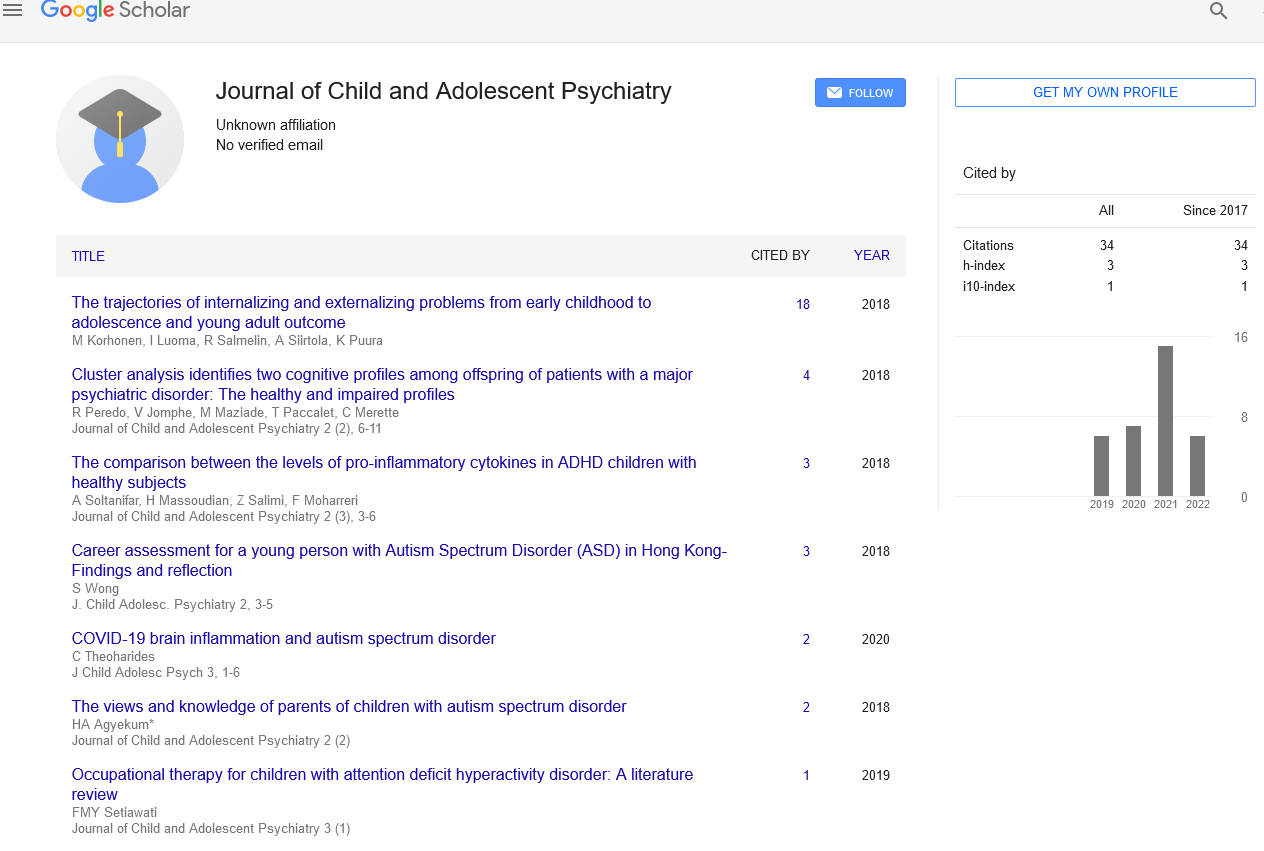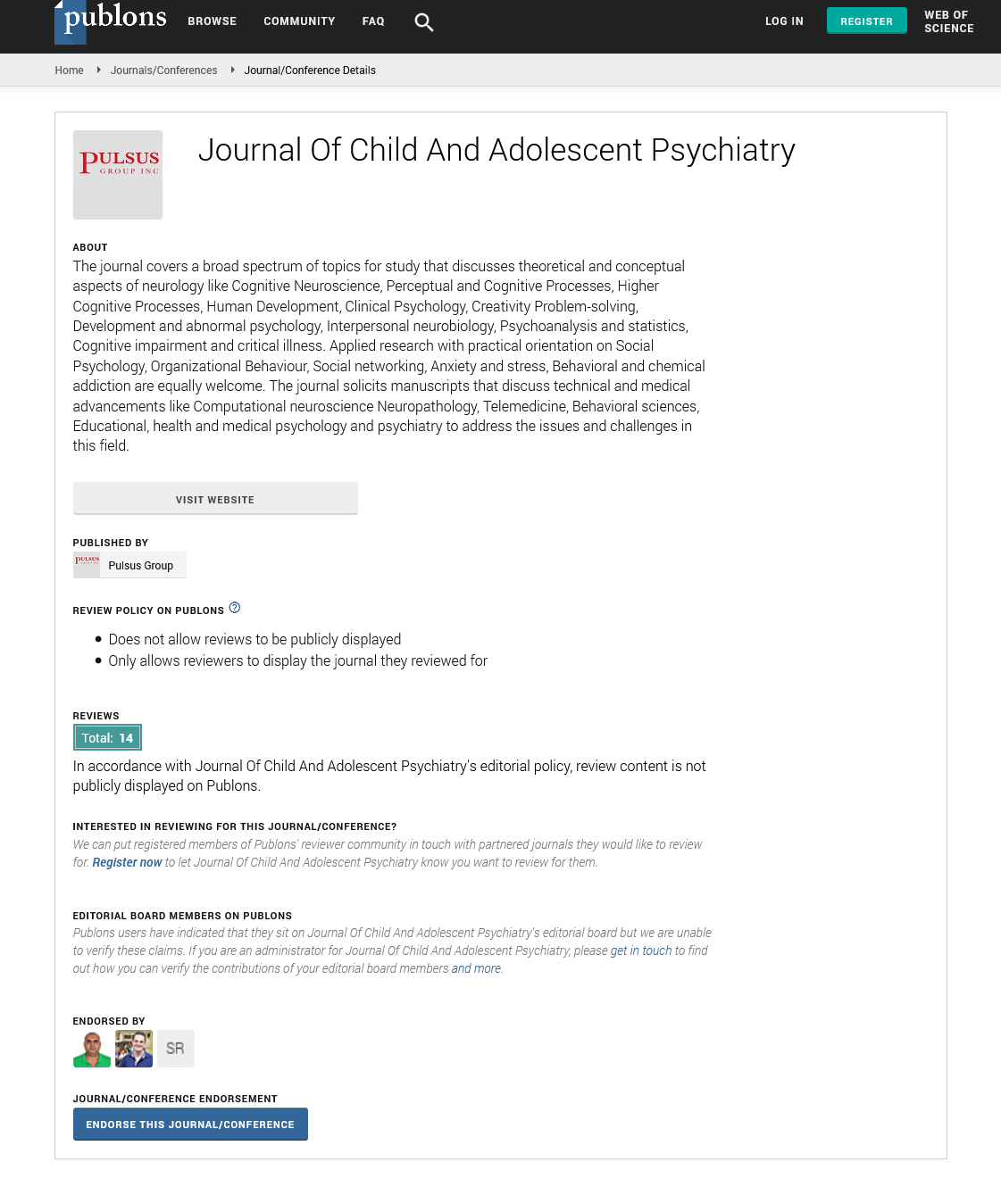Gaming Disorder
Received: 04-Aug-2022, Manuscript No. PULJCAP-22-5522; Editor assigned: 12-Aug-2022, Pre QC No. PULJCAP-22-5522(PQ); Accepted Date: Aug 31, 2022; Reviewed: 16-Aug-2022 QC No. PULJCAP-22-5522(Q); Revised: 16-Aug-2022, Manuscript No. PULJCAP-22-5522(R); Published: 27-Sep-2022, DOI: puljcap.2022.6(5);33-34.
Citation: James S. Gaming disorder. J Child Adolescence Psychiatry. 2022; 6(5):31-32.
This open-access article is distributed under the terms of the Creative Commons Attribution Non-Commercial License (CC BY-NC) (http://creativecommons.org/licenses/by-nc/4.0/), which permits reuse, distribution and reproduction of the article, provided that the original work is properly cited and the reuse is restricted to noncommercial purposes. For commercial reuse, contact reprints@pulsus.com
Abstract
In Japan, playing video games is the most popular form of recreation, particularly among boys. In a nationwide study (n=5,096), 85.0% of respondents (92.6% of men and 77.4% of women) said they have played games at least once in the previous year. Nearly half of all respondents (48.1%) said they mostly play games online. The average age of people who first use the Internet is getting younger. 33.7% of 10-year-olds, 62.6% of 2-year-old, and 82.3% of 6-year-old children utilised the Internet for any reason, according to a large-scale poll of parents of children under 10 (n = 2,294). (3). The same survey's findings also revealed that 82.0% of kids aged 17 and under (n=5,805)
Introduction
An abundance of online gaming has been linked to neurodevelopmental issues like autism spectrum disorder (ASD) and attention deficit hyperactivity disorder, according to earlier research (ADHD). According to Ostinelli et alsystematic .'s review and meta-analysis, about one-third of those with GD also reported depression. Teenage problematic gaming was linked to despair and anxiety, according to a large-scale cohort study in Sweden. According to certain brain imaging studies, GD and depression may have a similar aetiology . Japan has also observed physical and psychological problems following teens' excessive gaming. Regarding neurodevelopmental diseases, a comprehensive evaluation of 1,028 previously published publications revealed that GD symptoms and ADHD symptoms were consistently linked . The rise in cases of school refusal and absenteeism, many of which appear to increase during adolescence and frequently progress to the stage known as "hikikomori," a condition characterised by severe social withdrawal, has caused long-standing and unresolved issues for mental health professions in Japan. Hikikomori was initially thought to be a sickness that was connected to Japanese culture. Shame and amae, which refer to the acceptability of excessively dependent behaviours, have historically characterised the culture backdrop of Japan. Taijin kyofusho, a severe kind of social anxiety, may be caused by this equally culturally tied disease . However, the frequency of hikikomori cases reported outside of Japan has been gradually rising as more and more studies on the condition are published in English.
There aren't enough specialised facilities in Japan for the treatment of addictions, and when there are, they're usually intended for people older than 18 years old. Furthermore, Japan has very few facilities that are dedicated to treating Internet addiction . Although there are many behavioural addictions, most school-aged patients with GD have first visited child and adolescent psychiatry clinics rather than addiction-specific clinics, despite the fact that GD is one of many behavioural addictions. There is evidence that there is a rise in the number of children and adolescents seeking treatment at medical facilities that offer child and adolescent psychiatry services for a variety of issues related to excessive gaming, including family violence , expensive bills as a result of some of the games' rules and reward structures , and sleep-wake disturbances .
There aren't enough specialised facilities in Japan for the treatment of addictions, and when there are, they're usually intended for people older than 18 years old. Furthermore, Japan has very few facilities that are dedicated to treating Internet addiction. Although there are many behavioural addictions, most school-aged patients with GD have first visited child and adolescent psychiatry clinics rather than addiction-specific clinics, despite the fact that GD is one of many behavioural addictions. There is evidence that there is a rise in the number of children and adolescents seeking treatment at medical facilities that offer child and adolescent psychiatry services for a variety of issues related to excessive gaming, including family violence, expensive bills as a result of some of the games' rules and reward structures, and sleep-wake disturbances. The World Health Assembly approved the ICD-11, the most recent version, in 2019; it went into force on January 1, 2022. The addition of GD to the list of psychiatric disorders in ICD-11 is one of the most noticeable modifications. The acknowledgment of GD as a type of behavioural addiction along with gambling problem is the result of mounting evidence based on numerous studies, including neuro-imaging investigations .
Our survey's findings showed that although though GD is a behavioural addiction, many kids and teens who have it initially seek treatment at child and adolescent psychiatry clinics rather than specialised addiction clinics, which are typically outfitted and staffed for adult patients. Given that GD is more common among young guys, especially junior high and high school students.






